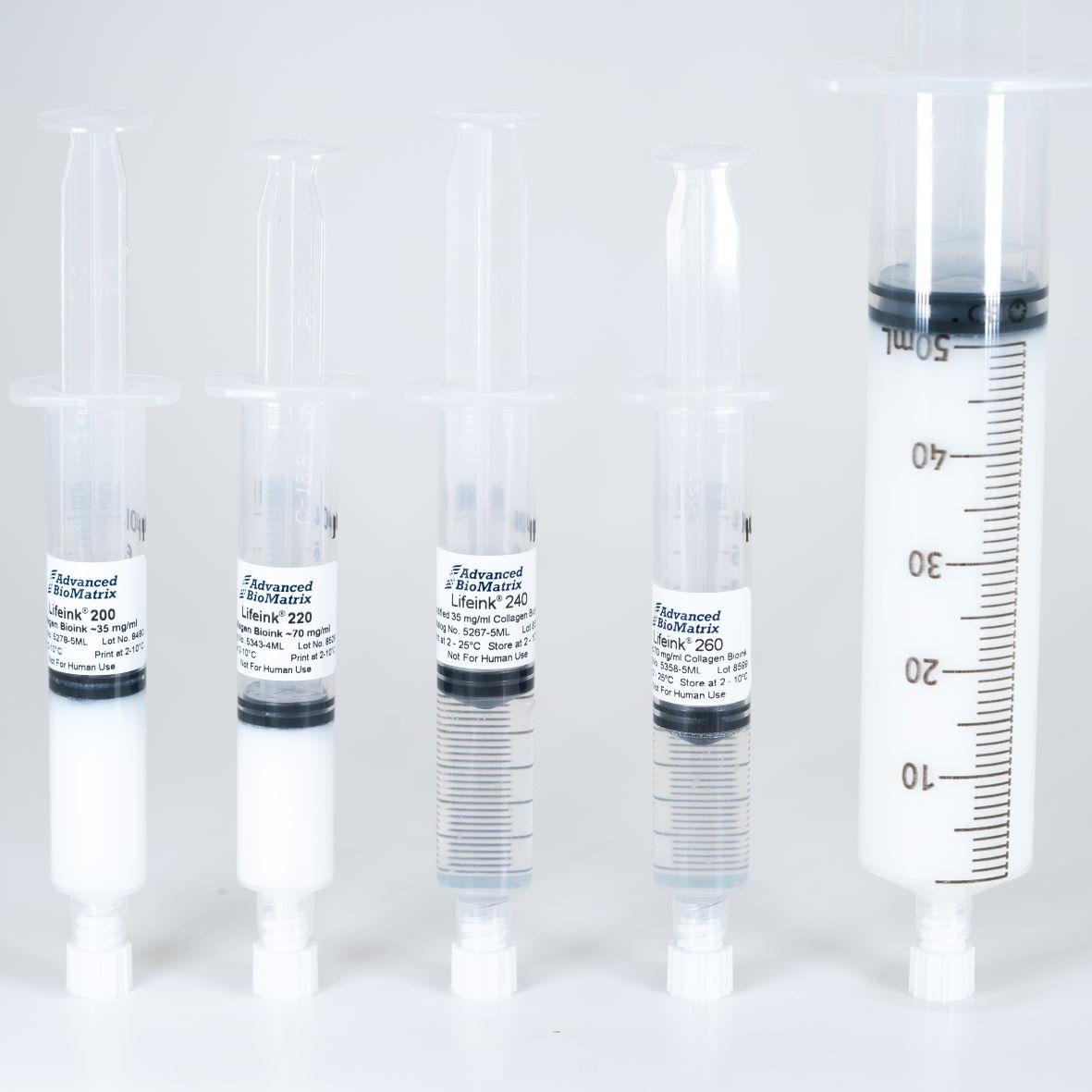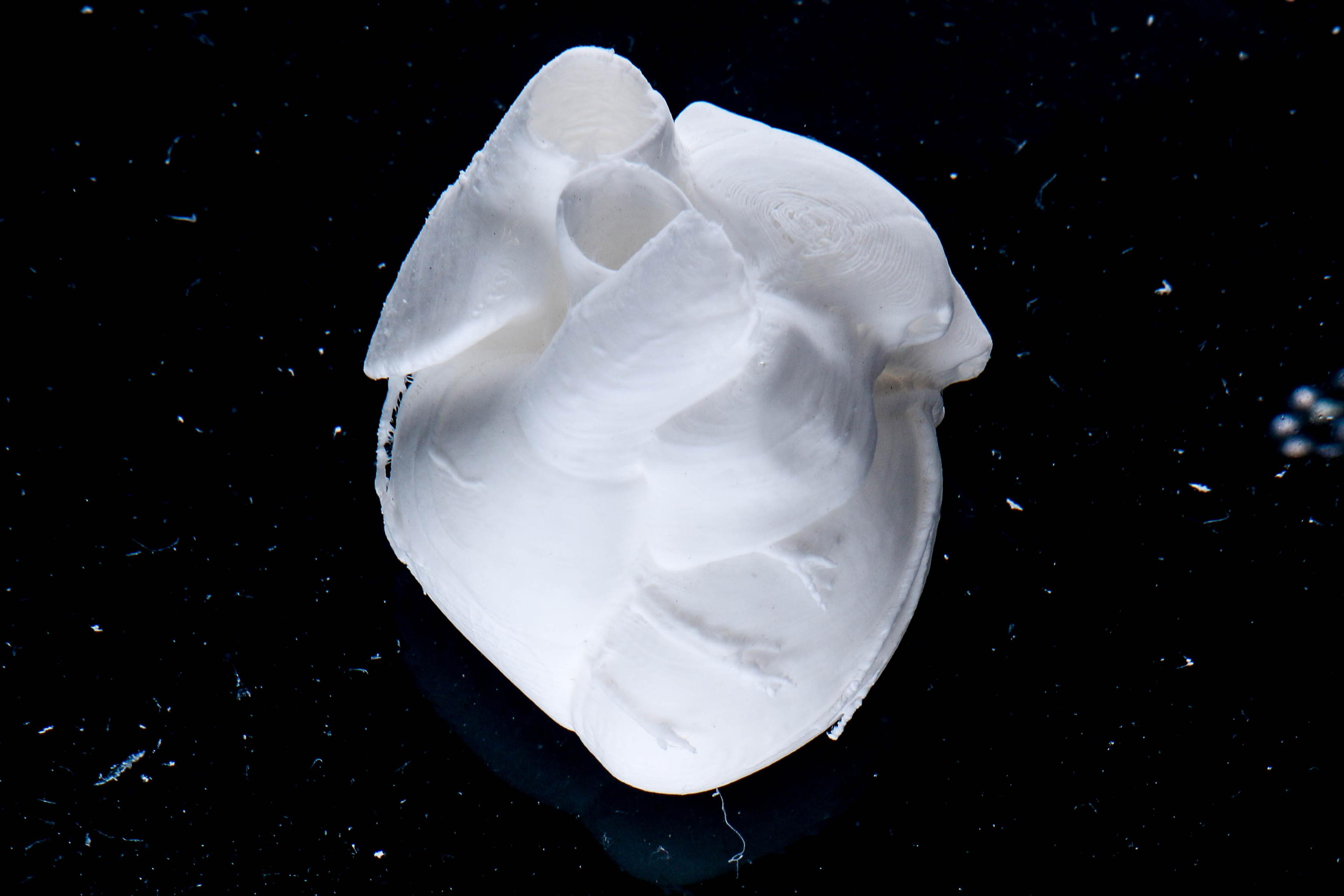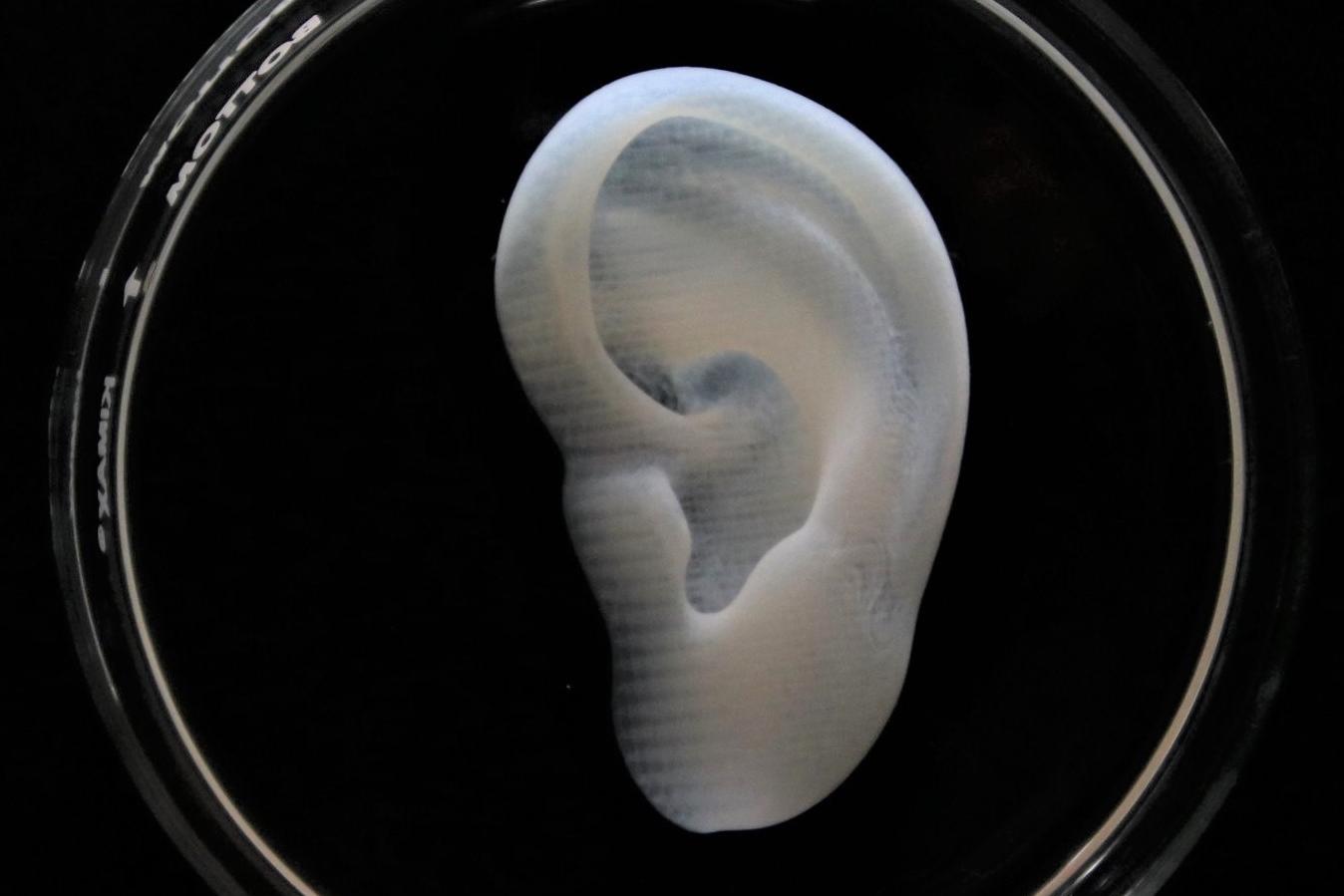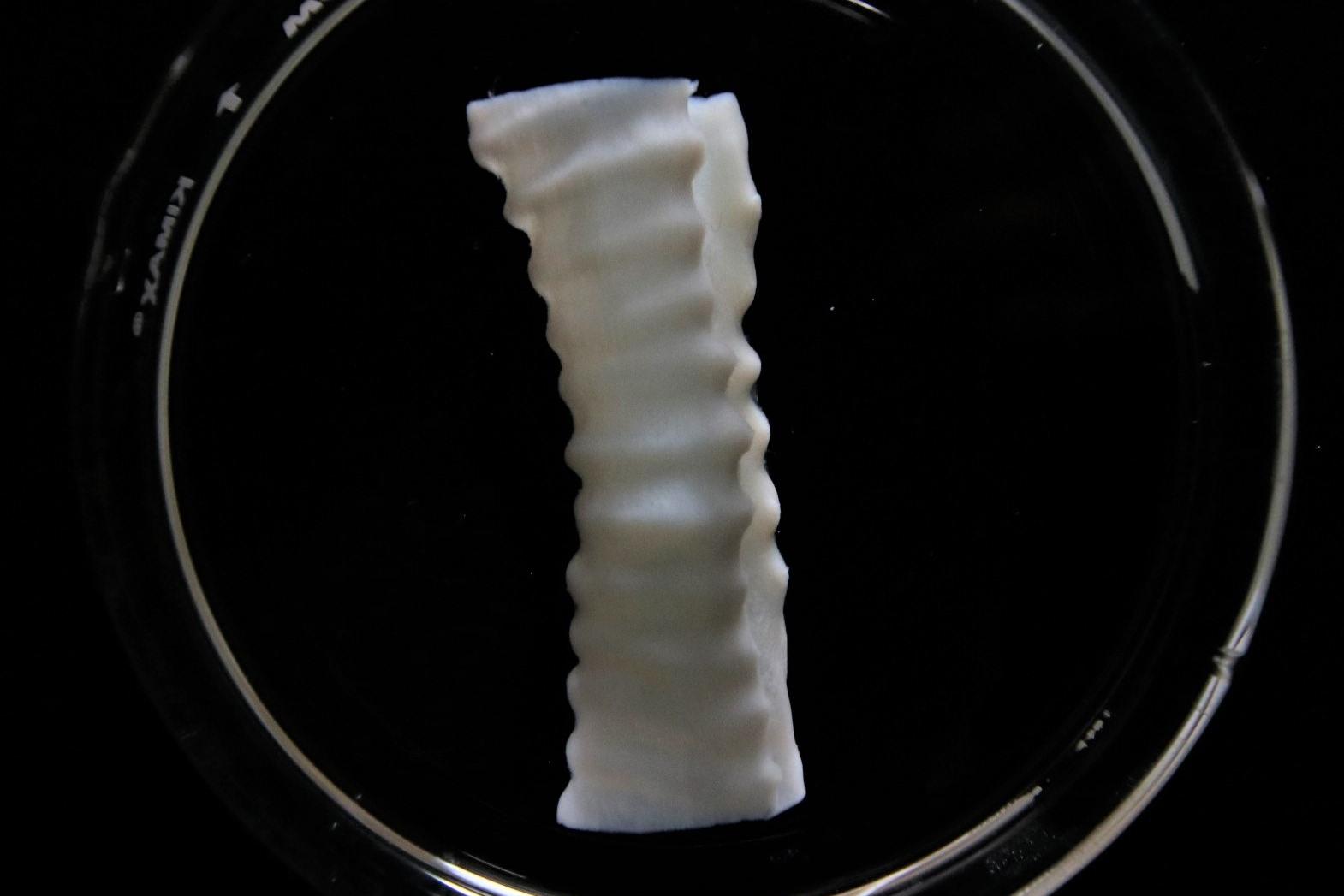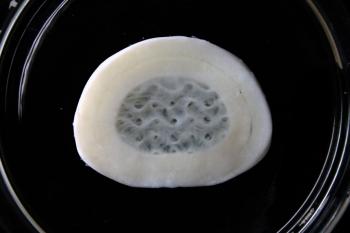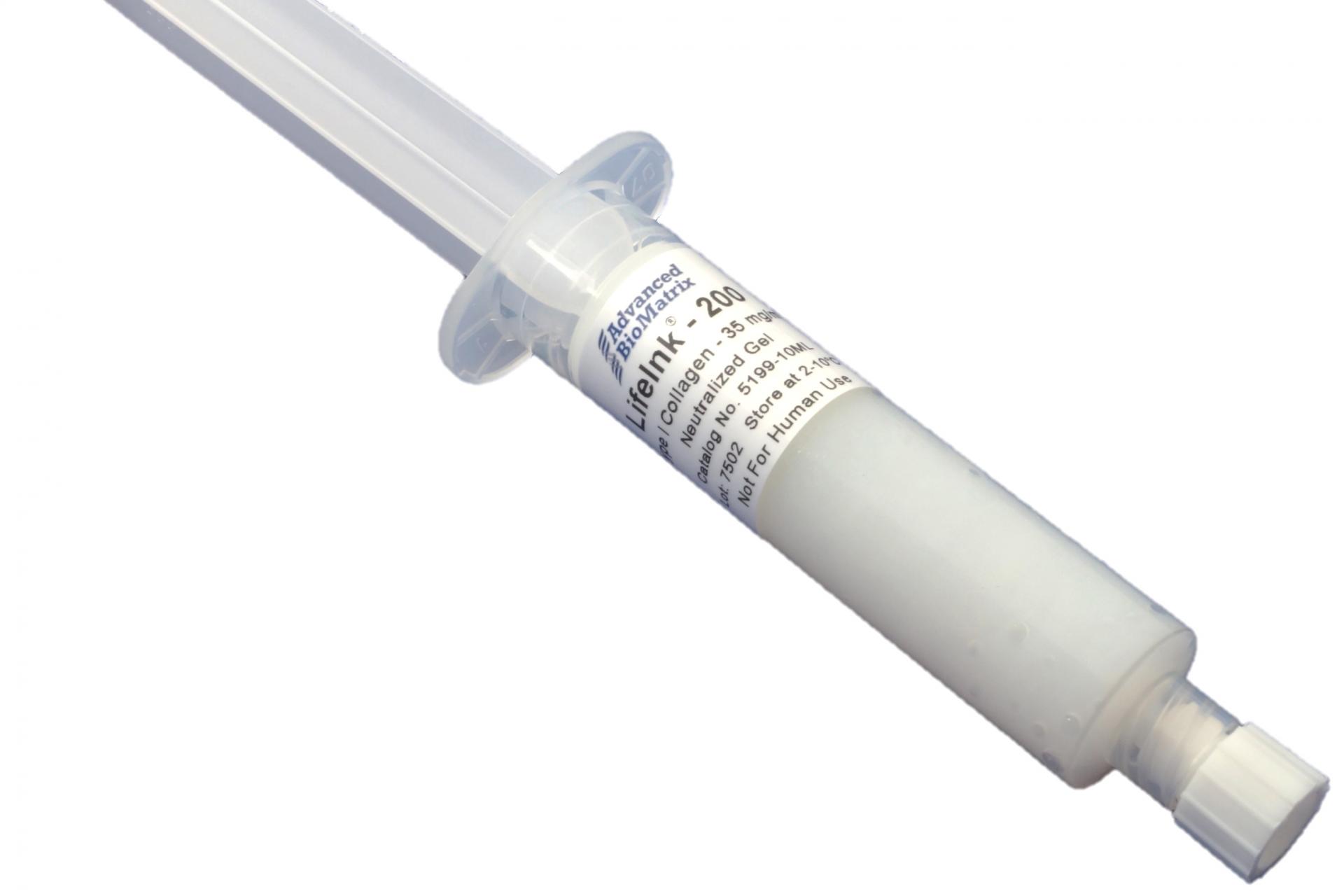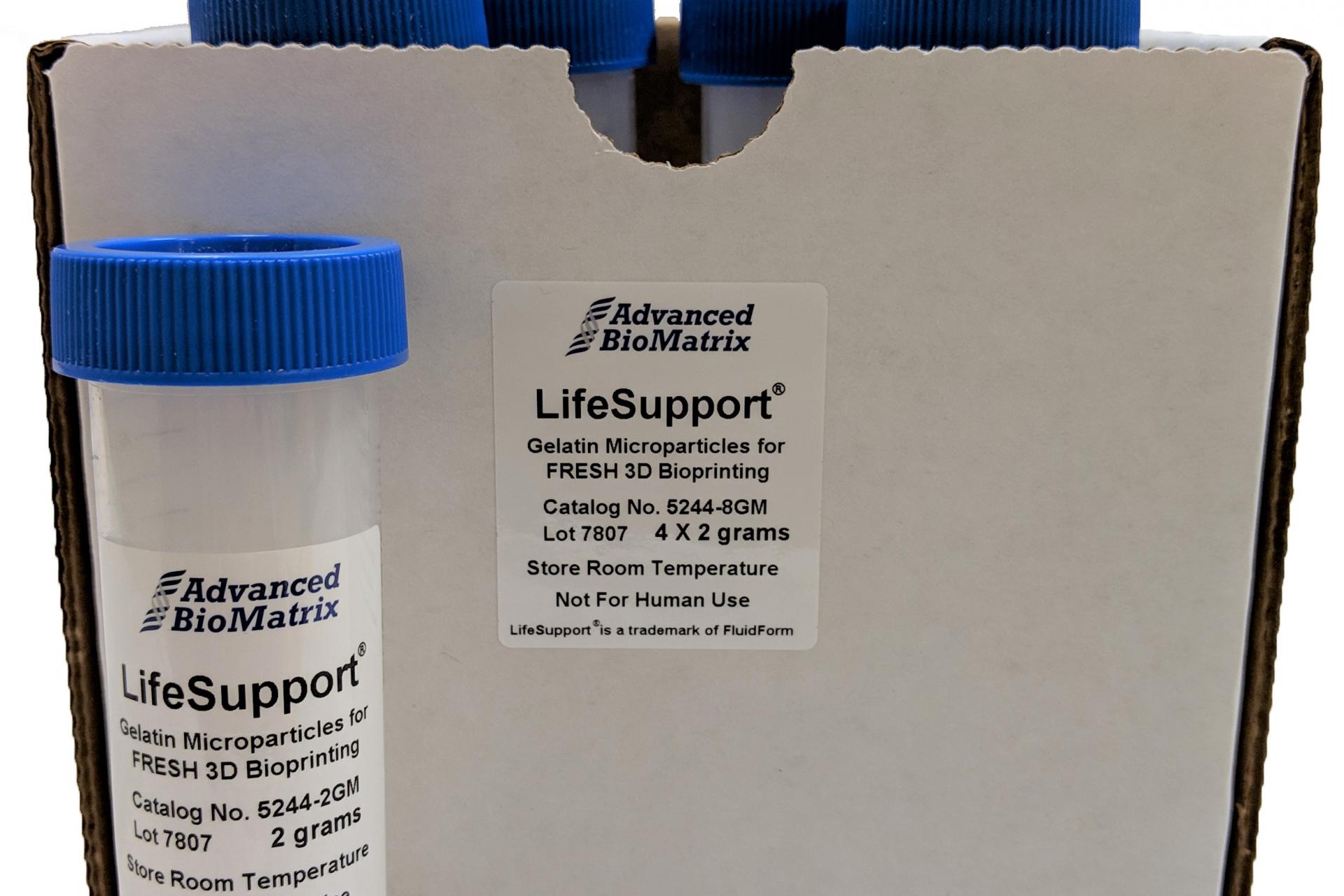-
Collagen
-
Type I - Atelocollagen
- PureCol® Solution, 3 mg/ml (bovine) #5005
- Nutragen® Solution, 6 mg/ml (bovine) #5010
- FibriCol® Solution, 10 mg/ml (bovine) #5133
- PureCol® EZ Gel, Solution, 5 mg/ml (bovine) #5074
- PureCol® Lyophilized, 15 mg (bovine) #5006
- VitroCol® Solution, 3 mg/ml (human) #5007
- VitroCol® Lyophilized, 15 mg (human) #5008
-
Type I - Telocollagen
- TeloCol®-3 Solution, 3 mg/ml (bovine) #5026
- TeloCol®-6 Solution, 6 mg/ml (bovine) #5225
- TeloCol®-10 Solution, 10 mg/ml (bovine) #5226
- RatCol® for 3D gels, Solution, 4 mg/ml (rat) #5153
- RatCol® High Concentration, Solution, 10 mg/ml (rat)
- RatCol® lyophilized, 100 mg (rat)
- RatCol® for Coatings, Solution, 4 mg/ml (rat) #5056
- Type I - Insoluble Collagen
- Type I - Bioinks
- Type II Collagen
- Type III Collagen
- Type IV Collagen
- Collagen Standard
- PureCol® Collagen Coated Plates
- Collagen Scaffolds
- Collagen Hybridizing Peptides
-
Type I - Atelocollagen
- Tunable Stiffness
- CytoSoft® Rigidity Plates
-
Bioprinting
- Support Slurry for FRESH Bioprinting
- Collagen Bioinks for Extrusion Bioprinting
- GelMA Bioinks for Extrusion Bioprinting
- Photoinitiators
- Bioinks and Components for DLP Bioprinting
- Bioink Components
- Methacrylated Collagen
- Methacrylated Gelatin
- Methacrylated Hyaluronic Acid
- Diacrylates
- Methacrylated Polysaccharides
-
3D Hydrogels
- Thermoreversible Hydrogel
- Silk Fibroin
-
Type I Collagen for 3D Hydrogels
- PureCol® Solution, 3 mg/ml (bovine) #5005
- Nutragen® Solution, 6 mg/ml (bovine) #5010
- FibriCol® Solution, 10 mg/ml (bovine) #5133
- PureCol® EZ Gel, Solution, 5 mg/ml (bovine) #5074
- VitroCol® Solution, 3 mg/ml (human) #5007
- TeloCol®-3 Solution, 3 mg/ml (bovine) #5026
- TeloCol®-6 Solution, 6 mg/ml (bovine) #5225
- TeloCol®-10 Solution, 10 mg/ml (bovine) #5226
- RatCol® for 3D gels, Solution, 4 mg/ml (rat) #5153
- HyStem® Thiolated Hyaluronic Acid
- Methacrylated Collagen
- Methacrylated Gelatin
- Methacrylated Hyaluronic Acid
- Diacrylates
- Collagen Sponges
- Methacrylated Polysaccharides
- Extracellular Matrices
- HyStem / Hyaluronic Acid
-
Adhesion Peptides / Proteins
-
Recombinant Adhesion Proteins
- CD2, 0.5 mg/ml #5086
- CDH3, 0.5 mg/ml #5124
- CDH13, 0.5 mg/ml #5125
- CD14, 0.5 mg/ml #5089
- CDH18, 0.5 mg/ml #5090
- CD40, 0.5 mg/ml #5093
- CD86, 0.5 mg/ml #5096
- CD164, 0.5 mg/ml #5100
- CD270, 0.5 mg/ml #5127
- CD274, 0.5 mg/ml #5126
- CD276, 0.5 mg/ml #5123
- E-Cadherin (CD324), 0.5 mg/ml #5085
- ICAM2, 0.5 mg/ml #5107
- Adhesion Peptides
- Collagen Hybridizing Peptides
-
Recombinant Adhesion Proteins
- Reagents
- Assays
Lifeink® 260
70 mg/ml Acidic Type I Collagen Bioink
Catalog #5358
Lifeink® 260
70 mg/ml Acidic Type I Collagen Bioink
Catalog #5358
Lifeink® 260 is a 70 mg/ml type I collagen bioink for extrusion based FRESH 3D bioprinting. Lifeink® 260 comes with acidic pH and when FRESH printed into LifeSupport® yields a neutralized, high resolution collagen scaffold.
Product Description
Lifeink® 260 is an acidic Type I collagen bioink at a concentration of 70 mg/ml for extrusion-based 3D bioprinting. The product is a highly concentrated acidified collagen solution intended to be extrusion printed employing FRESH bioprinting (see LifeSupport® Catalog No. 5244-10GM).
Lifeink® 260 produces printed structures with a high print resolution and good mechanical strength. The product is formulated in an acidic saline buffer solution. Once the collagen is printed into LifeSupport®, the pH and salts concentration of the printed structure become physiological. Cells can then be seeded onto the printed structure allowing for cell adherence and cellular remodeling of the 3D bioprinted structure.
| Parameter, Testing, and Method | Lifeink® 260 #5358 |
| Sterilization Method | Filtration, Aseptic Processing |
| Sterility - USP modified | No growth |
| Form | Clear Viscous Solution |
| Package Size | 4 mL |
| Storage Temperature | 2-8°C |
| Print Temperature | 2-25°C |
| Shelf Life | Minimum of 6 months from date of receipt |
| Endotoxin - LAL | < 10.0 EU/mL |
| pH | 3.0-5.0 |
|
Osmolality (mOsmo H2O/kg) |
450-700 |
|
Source Material |
Bovine Collagen |
|
Electrophoretic Pattern - Coomassie Blue |
Characteristic |
|
Collagen Concentration - Biuret |
65-75 mg/mL |
|
Collagen Purity - Silver Staining |
>99% |
|
Continuous Flow Extrusion |
Pass |
Directions for Use
The DFU below is for Lifeink 240, though the exact same techniques and directions apply for the higher concentration version, Lifeink 260
Download the full PDF version or continue reading below:
Note: Employ aseptic practices to maintain the sterility of the product throughout the preparation and handling of the collagen and other solutions.
Note: Ensure that NO bubbles enter the system if mixing other materials. Bubbles in the system while mixing will turn your ink into a foam-like material.
Note: Cells should not be added directly to the Lifeink® 240 bioink since it is an acidic formulation.
Addition of other components to Lifeink® 260 Bioink:
Note: Components other than cells can be added to the Lifeink® 260 bioink before bioprinting as long as these components are compatible with acidic pH conditions.
- To mix in additives to the bioink, add the additives to a secondary syringe as demonstrated in the video below:
Note: The video shows cells being added to the bioink. Other materials can be added to the Lifeink® 260 bioink in lieu of cells. Cells should NOT be added directly to this bioink. For cellular bioprinting, use Lifeink® 200 #5278-5ML.
Note: For best results, add no more than 5 mL of other components per 5 mL of collagen bioink. Use a similar ratio for smaller volumes.
- Place sterile coupler on the end of the syringe with the bioink additives.
- Slowly push plunger in until solution forms a slight external meniscus above the end of the coupler on the syringe.
- Remove cap from the syringe with collagen and slowly push plunger in until collagen forms a slight external meniscus above the end of the syringe.
- Couple the syringe with additives to the syringe with collagen. (Ensure that there are no air bubbles in the system. The “external meniscus” on both syringes helps ensure that there are no air bubbles introduced).
- Slowly push plungers back and forth ~40 times to ensure thorough mixing. End with all of the material in the syringe to be used for printing.
- The bioink with other components is now ready for extrusion 3D bioprinters.
Note: For pneumatic printers, transfer the collagen into an appropriate syringe using the coupler. The new syringe should have the seal inserted, but the plunger removed. Centrifuge the syringe at 2000 RPM for 1 minute after transferring the collagen to remove any air bubbles.
General Printing Notes:
- To use a smaller volume of collagen, simply transfer the desired amount of collagen to another syringe, using the provided sterile coupler. To remove the air from the new syringe, you can do either of the following:
-
- Centrifuge the syringe (capped) with the cap pointing up to cause the air to accumulate at the cap. Evacuate the air.
- Centrifuge the syringe (capped) with the cap pointing down, and then use a hemostat to squeeze the syringe while pushing the plunger to allow the air to escape.
Removing air with a hemostat video
- When printing with FRESH gelatin slurry, allow the final printed structure to incubate at 37°C for 30 to 60 minutes and then replace the gelatin with media.
- Avoid bubbles.
For more directions on FRESH printing, please visit our LifeSupport® Directions for Use.
Product Bioprints
Heart
3D bioprinted collagen ear
3D bioprinted collagen ear with Lifeink 240 and LifeSupport
3D bioprinted intervertebral disc
3D bioprinted intervertebral disc with Lifeink 240 and LifeSupport
3D bioprinted Trachea with Lifeink 240 and LifeSupport
3D bioprinted Trachea with Lifeink 240 and LifeSupport
Product Certificate of Analysis
No result for .
Product Videos
Product Disclaimer
This product is for R&D use only and is not intended for human or other uses. Please consult the Material Safety Data Sheet for information regarding hazards and safe handling practices.

